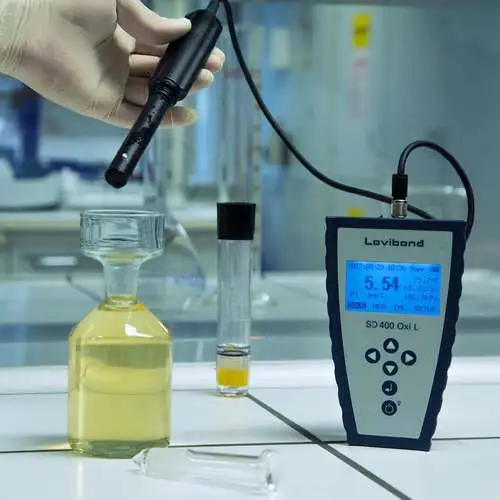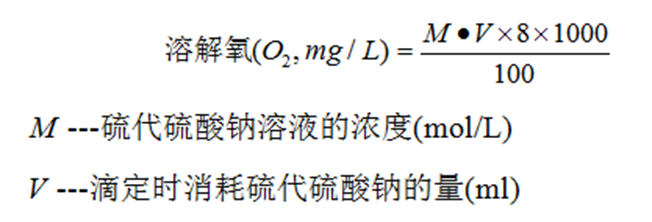Molecular oxygen dissolved in water is termed dissolved oxygen (DO). The saturation level of dissolved oxygen is closely related to the partial pressure of oxygen in air, atmospheric pressure, and water temperature. Clean surface water typically has DO levels near saturation, while wastewater generally contains lower DO.

1. Method Selection
Common methods for determining dissolved oxygen include the ?iodometric method? (and its modifications) and ?dissolved oxygen meters?. Oxidizing substances can release iodine from iodides, causing positive interference; reducing substances can reduce iodine to iodides, causing negative interference. Modified iodometric methods or electrode methods are recommended for most polluted surface waters and industrial wastewater.
2. Sample Collection and Preservation
Samples should be collected in ?DO bottles? without introducing bubbles. Fill the bottle by gently pouring water along the inner wall until it overflows (1/3–1/2 of the bottle volume). After collection, fix the sample immediately on-site and store in the dark.
Iodometric Method
1. Principle
Dissolved oxygen oxidizes divalent manganese (Mn2?) to tetravalent manganese (Mn??) in the presence of manganese sulfate and alkaline iodide, forming a tetravalent manganese hydroxide precipitate. Acidification dissolves the precipitate, releasing iodine via reaction with iodide. The iodine is titrated with sodium thiosulfate using starch as an indicator, allowing DO calculation.
2. Apparatus
250–300 mL DO bottles
. Reagents
?(1) Manganese Sulfate Solution
Dissolve 240 g MnSO?·4H?O (or 182 g MnSO?·H?O) in water and dilute to 500 mL.4-2-4-2-
(2) Alkaline Iodide Solution
Dissolve 250 g NaOH in 200 mL water and 75 g KI in 100 mL water. After cooling the NaOH solution, mix the two solutions and dilute to 500 mL.
If precipitates form, let stand overnight, decant the supernatant, store in a brown bottle with a rubber stopper, and protect from light.
?(3) 1:5 Sulfuric Acid Solution? Mix 1 part concentrated H?SO? with 5 parts water.
?(4) 1% Starch Solution
Mix 1 g soluble starch with a small amount of water to form a paste, then dilute with freshly boiled water to 100 mL. After cooling, add 0.4 g ZnCl? as a preservative.
(5) 0.02500 mol/L (1/6 K?Cr?O? Standard Solution)2Cr2O7)
Dissolve 1.2258 g K?Cr?O? (dried at 105–110°C for 2 h and cooled) in water, transfer to a 1000 mL volumetric flask, and dilute to the mark.
?(6) Sodium Thiosulfate Solution
Dissolve 6.2 g Na?S?O?·5H?O in boiled and cooled water, dilute to 1000 mL, and store in a brown bottle. ?Standardize before use? as follows:2-2O3-2-
-
Add 100 mL water, 1 g KI, 10.00 mL 0.02500 mol/L K?Cr?O?, and 5 mL 1:5 H?SO? to a 250 mL iodine flask. Seal, mix, and let stand in the dark for 5 min. Titrate with Na?S?O? until pale yellow, add 1 mL starch solution, and continue titration until blue disappears. Record the volume used.

?(7) Concentrated Sulfuric Acid
3. Procedure
?(1) Fixation of Dissolved Oxygen (Fixed On-Site During Sampling)
① Insert a pipette below the liquid surface and add 1 mL MnSO? solution + 2 mL alkaline iodide solution.
② Seal the bottle and invert several times to mix. Let stand.
③ After the precipitate settles to half the bottle height, invert again. Wait until the precipitate settles completely.
?(2) Iodine Release
Carefully open the bottle, insert a pipette below the liquid surface, add 2.0 mL concentrated H?SO?, reseal, and mix until the precipitate dissolves. Store in the dark for 5 min.
?(3) Titration
Transfer 100.0 mL of the solution to a 250 mL conical flask. Titrate with Na?S?O? until pale yellow, add 1 mL starch solution, and continue titration until blue disappears. Record the volume used.

Sodium Azide Modification (Iodometric Method)
1. Overview
Nitrites in water interfere with the iodometric method. Sodium azide (NaN?) is added to decompose nitrites and eliminate interference. For samples with 100–200 mg/L Fe3?, add 1 mL 40% KF solution to suppress interference (if no other redox substances are present).3+ .
2. Reagents
(1) Alkaline Iodide-Azide Solution?: Dissolve 250 g NaOH in 200 mL water, 75 g KI in 100 mL water, and 5 g NaN? in 20 mL water. Mix the three solutions after cooling the NaOH solution, dilute to 500 mL, store in a brown bottle with a rubber stopper, and protect from light.
?(2) 40% (m/v) Potassium Fluoride (KF)?: Dissolve 40 g KF·2H?O in water and dilute to 100 mL. Store in a polyethylene bottle.2-
?(3) Procedure?: Same as the standard iodometric method, but replace alkaline iodide with ?alkaline iodide-azide solution?. For Fe3? interference, add 1 mL 40% KF solution below the liquid surface first.3+.
Notes
(1)Sodium azide is ?highly toxic and explosive?. Do not acidify alkaline iodide-azide solution directly, as it releases toxic fumes.
(2)Adjust strongly acidic/alkaline samples to neutral pH with NaOH or H?SO?.
(3)?Avoid introducing bubbles? during operations.
(4)Sodium thiosulfate concentration varies easily; standardize before each use


 蘇公網(wǎng)安備 32050902101529號(hào)
蘇公網(wǎng)安備 32050902101529號(hào) ?Scan WeChat QR to Follow
?Scan WeChat QR to Follow
